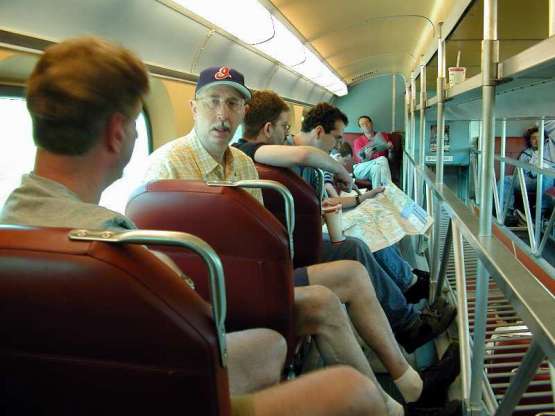zoltan
Service Attendant
- Joined
- Sep 6, 2008
- Messages
- 230
This would be nothing less than my second post here. I'm from Northern England, and in all of my visits to the states I have tried to experience a bit more of the vast railway network. My first trip took me to Maryland, and it was the MARC trains that sparked my first interest in North American railways.
And it's this that brings me to my first topic, because if there's one thing that unites commuters on the nearest line to where I visited my friend in Maryland in, it's hate of the ex-Metra gallery cars. So I've heard a lot about the relatively small set of new arrivals to the Maryland network, although all but one of my journeys have been on their ancient single levels; I've never had the chance to experience the gallery cars myself.
So anyone from Chicago, Northern Virginia, the bay area, etc., etc., might be able to shed light on my curiosities about these cars.
1. can the gallery cars REALLY work? I find this hard to believe. That is, is it really the case that guards are able to check tickets on both levels from the lower deck aisle, despite the fact the upper deck must naturally be higher up than a person of average height?
2. How can it be remotely possible to fit the open central space, an aisle on either side, and also four seats, across the width of the upper deck?
3. What is the seating configuration on the upper and lower decks?
4. Where are the staircases placed?
Of course, I would merely wait and see for myself, but any commuters from Frederick will know that Monocacy station's high platform forbids the cars from the particular branch that's relevant to my travels into deepest Maryland.
And it's this that brings me to my first topic, because if there's one thing that unites commuters on the nearest line to where I visited my friend in Maryland in, it's hate of the ex-Metra gallery cars. So I've heard a lot about the relatively small set of new arrivals to the Maryland network, although all but one of my journeys have been on their ancient single levels; I've never had the chance to experience the gallery cars myself.
So anyone from Chicago, Northern Virginia, the bay area, etc., etc., might be able to shed light on my curiosities about these cars.
1. can the gallery cars REALLY work? I find this hard to believe. That is, is it really the case that guards are able to check tickets on both levels from the lower deck aisle, despite the fact the upper deck must naturally be higher up than a person of average height?
2. How can it be remotely possible to fit the open central space, an aisle on either side, and also four seats, across the width of the upper deck?
3. What is the seating configuration on the upper and lower decks?
4. Where are the staircases placed?
Of course, I would merely wait and see for myself, but any commuters from Frederick will know that Monocacy station's high platform forbids the cars from the particular branch that's relevant to my travels into deepest Maryland.





